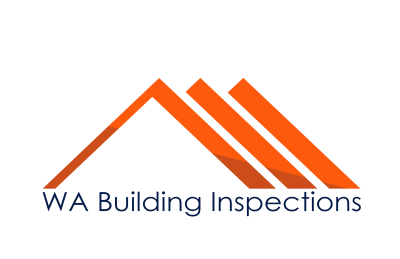When it comes to the purchase or sale of a building, conducting a proper inspection is crucial. AS4349.1 is the Australian Standard for inspection of buildings & it provides a framework for building inspections. In this article, we will take an in-depth look at the most current version of this standard AS4349 1 2007, what it entails & how it can be used to ensure a thorough & effective building inspection.
Table of Contents
- What is AS4349.1 2007?
- Why is AS4349.1 important?
- What are the general principles of AS4349.1?
- What are the different types of inspections under AS4349.1?
- What are the limitations of AS4349.1?
- What are the responsibilities of the inspector under AS4349.1?
- What are the reporting requirements under AS4349.1?
- What are the key elements of an AS4349.1-compliant report?
- How can AS4349.1-compliant reports benefit property buyers and sellers?
- How can AS4349.1-compliant reports benefit property inspectors?
- How can AS4349.1 help with risk management in building inspections?
- Our Final Say
- FAQ
What is AS4349.1 2007?
AS4349.1 2007 is a building inspection standard that was first introduced in 1995 by Standards Australia. The standard provides a framework for conducting inspections of buildings (particularly pre purchase building inspections), including houses, apartments & commercial buildings. The standard covers all aspects of building inspections, from the inspection process itself to the format of the inspection report.
Why is AS4349 1 important?
We have found that AS4349.1 is important because it provides a set of guidelines for building inspections that can help ensure that inspections are conducted thoroughly & consistently. The standard helps to promote a uniform approach to building inspections, which is important for both property buyers & sellers. For buyers, the standard can help ensure that they receive a comprehensive & accurate report on the condition of the property they are considering purchasing. For sellers, the standard can help ensure that any issues with the property are identified & addressed before the property is put on the market.
What are the general principles of AS4349.1?
AS4349.1 is based on several general principles, including the need for an objective & impartial inspection, the need to identify & report on any significant defects or safety hazards & the need to provide clear & concise information in the inspection report. The standard also emphasises the importance of following a systematic approach to the inspection process including the use of appropriate tools & equipment & the need to document all findings & observations.
What are the different types of inspections under AS 4349.1?
AS4349.1 provides for three different types of inspections: visual inspections, non-invasive inspections & invasive inspections.
Visual Inspection
Visual inspections involve a thorough visual examination of the property, including both the interior & exterior of the building. The inspection includes an assessment of the condition of the building’s structure, as well as its mechanical, electrical & plumbing systems. Visual inspections also involve an assessment of the building’s accessibility & safety.
Non-Invasive Inspection
Non-invasive inspections involve the use of tools & equipment to examine the building without causing any damage. Examples of non-invasive inspections include the use of thermal imaging cameras, moisture meters & sound detectors to identify potential issues.
Invasive Inspection
Invasive inspections involve the use of tools & equipment to physically access & examine parts of the building that are not visible or easily accessible. Examples of invasive inspections include drilling holes in walls or ceilings to inspect for pests or structural issues, or removing floor coverings to inspect the subfloor.
What are the limitations of AS 4349 1?
While AS4349.1 provides a comprehensive framework for building inspections, it does have some limitations. One of the main limitations is that it does not cover all types of buildings such as heritage buildings or buildings with unique design features. Additionally the standard does not cover certain aspects of building inspections such as checking for compliance with building codes or regulations. These are things, that our experience teaches us.
What are the responsibilities of the inspector under AS4349 1?
Under AS4349.1, inspectors have a number of responsibilities. These include ensuring that the inspection is conducted in accordance with the standard, following a systematic approach to the inspection process & providing a clear & concise report on the condition of the building. Inspectors are also responsible for identifying any significant defects or safety hazards & reporting these to the client.
What are the reporting requirements under AS4349.1?
AS4349.1 sets out specific reporting requirements for building inspections. These include providing an executive summary, general information about the building, the inspector’s findings & conclusions & recommendations. The report must also include photographs & other relevant documentation to support the findings & recommendations.
What are the key elements of an AS4349.1-compliant report?
An AS4349.1-compliant report should include the following key elements:
Executive Summary
The executive summary should provide a brief overview of the inspection findings & highlight any significant defects or safety hazards.
General Information
The general information section should provide details about the building, including its age, construction type & location. It should also include information about the scope of the inspection & any limitations or exclusions.
Inspection Findings
The inspection findings section should provide a detailed description of the building’s condition, including any defects or safety hazards identified during the inspection. This section should also include photographs & other documentation to support the findings.
Our Conclusions and Recommendations
The conclusions & recommendations section should summarise the inspector’s findings & provide recommendations for addressing any defects or safety hazards identified during the inspection.
How can AS4349.1-compliant reports benefit property buyers and sellers?
In our experience, AS4349.1-compliant reports can benefit property buyers & sellers in a number of ways. For buyers, the report provides a comprehensive & accurate assessment of the condition of the property they are considering purchasing, helping them to make an informed decision. For sellers, the report can identify any issues with the property that may need to be addressed before the property is put on the market, helping to ensure a smooth sale process.
How can AS4349.1-compliant reports benefit property inspectors?
AS4349.1-compliant reports can benefit property inspectors by providing a clear framework for conducting inspections & producing reports. The standard helps to ensure that inspections are conducted thoroughly and consistently, which can help to build the inspector’s reputation and attract more clients.
How can AS4349.1 help with risk management in building inspections?
AS4349.1 can help with risk management in building inspections by providing a systematic approach to the inspection process. By following the standard, inspectors can identify & report on any potential issues or defects in the building, reducing the risk of future problems or safety hazards for the building owner or occupants. Additionally by providing clear & concise reporting requirements AS4349.1 can help to reduce the risk of disputes or legal issues arising from building inspections.
Our Final Say
AS4349.1 provides a comprehensive framework for building inspections in Australia outlining the responsibilities of inspectors, the inspection process & reporting requirements. We have found that by following this standard, our building inspectors can conduct thorough & consistent inspections, producing accurate & informative reports for property buyers & sellers. Additionally, the standard can help to manage risks associated with building inspections reducing the likelihood of future problems or disputes arising.
FAQs
- Is AS4349.1 mandatory for building inspections in Australia? No, AS4349.1 is not mandatory but it is widely used as a best practice standard for building inspections.
- Can a building inspection report be used as a legal document? Yes a building inspection report can be used as a legal document but it is important to ensure that it complies with the reporting requirements set out in AS4349.1.
- What types of buildings are covered by AS4349.1? AS4349.1 covers a wide range of building types including residential & commercial buildings.
- Can AS4349.1 be used for inspections of heritage buildings or buildings with unique design features? While AS4349.1 may not be suitable for inspections of heritage buildings or buildings with unique design features it can provide a useful framework for conducting inspections of these types of buildings.
- How can I find a property inspector who follows AS4349.1? You can find a property inspector who follows AS4349.1 by searching online directories or contacting industry associations such as the Australian Institute of Building Surveyors or the Master Builders Association. It is important to ensure that the inspector you choose is qualified, experienced & reputable.


